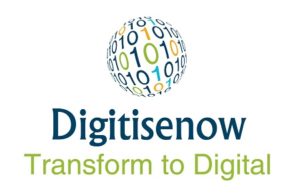
Mobilising the enterprise with ‘micro apps’ empowers organisations to revolutionise their core processes, enabling employees with access to timely important information. Micro apps break down processes into bite-sized chunks to be completed anywhere, on the move. Additionally, the easy-to-use interface means no user training is needed to reap the rewards.
Look to your Fortune 500 Neighbour on your left and say goodbye. If the trend over the last fifteen years or so continues, the likelihood is one of you will cease to exist in the form you do today. Since 2000, 52% of companies in the Fortune 500 have either gone bankrupt, been acquired or ceased to exist.
The digital disruption has certainly played a huge part in this, so it’s no surprise organisations are adapting. Across all industries, established enterprises have digital transformation initiatives either planned or underway. Digital transformation, however, is no ‘easy fix’. It’s difficult for organisations to know where, or even how to start.
Digital transformation is made especially difficult by the archaic legacy technology most established enterprises are using. This technology is often decades old, extremely costly to upgrade or replace, and embedded in the very core of the organisation. It provides a heartbeat for business processes, if you will, so changes can have dire consequences.
The journey from legacy
With technology shackling some organisations, is it even possible for those to digitally transform? IDC revealed business leaders cite their number one challenge to digital transformation as “Legacy systems won’t support the new processes and models involved in innovation”. These tried and tested systems were not built with the pace of today’s business world in mind and they were not built for mobility.
As a result, large organisations often end up layering levels of complexity on top of each other as they bolt on new services and products to rival agile digital competitors. This creates an effect where the outside image looks great, but under the hood leaves much to be desired. This is not easy to repair, especially as ‘under the hood’ is where valuable business data lies. Like a car with old mechanics, digital transformation initiatives often prove more difficult than they should be because of the complexities and inflexibility of the underlying systems.
Steering a 200-year-old forward
We have seen the benefits of mobilising the enterprise from our work with Schroders, the 213-year-old asset management giant, who was able to bring its legacy infrastructure into the digital ecosystem. Schroders requirement was to transform core business processes to stay relevant.
Schroders Chief Digital Officer revealed enterprise mobility was needed because employees “want to do work wherever they are.” Everyone has a mobile device and Schroders wanted to identify everyday activities take a few minutes and simplify them to significantly speed up business processes. Delivered on a mobile device, this provides better customer experiences by saving on the inefficiency of logging into several different systems.”
Elsewhere, we’ve seen Volvo Financial Services increase approval times by 60% and shorten complex approval processes from days to hours, whilst the City of LA saved $2.4 million on their journey to becoming a smart city. In all these cases, we used our mobile technology to streamline, simplify and mobilise operations, without additional coding of core systems.
Why mobile is a vital cog in the wheel
Mobilising the enterprise with ‘micro apps’ empowers organisations to revolutionise their core processes, enabling employees with access to timely important information. Micro apps break down processes into bite-sized chunks to be completed anywhere, on the move. Additionally, the easy-to-use interface means no user training is needed to reap the rewards.
Unlike the monolithic systems behind them, micro apps are personalised and designed with the user in mind. They negate the need to detangle and re-code the complex systems. In business, speed is imperative and anything allowing organisations to run quickly delivers an immediate competitive advantage. Old systems might be good for storing data, but they are not built for efficiency, speed or simplicity.
System simplification enables organisations to modernise, without touching legacy systems and incurring enormous costs and risks of replacing them.
Mobility plays an integral part in simplifying and modernising legacy applications. With no need for additional coding, it’s the route to the top of the podium. Ailing enterprises now have a chance to survive, in fact, to thrive, rather than fade into extinction. Mobile transformation provides a competitive advantage and the ability to become agile and modern entities. It is the road ahead.
Source : http://www.huffingtonpost.co.uk/russell-acton/mobility-drives-digital-t_b_15486422.html